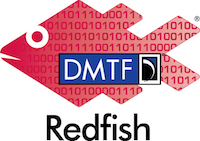Now Available – SPDM to Storage Binding Specification

The Security Protocols and Data Models Working Group recently released the Security Protocol and Data Model (SPDM) to Storage Binding Specification 1.0 (DSP0286), which defines the format of SPDM messages over storage protocols. This specification binds SPDM messages (DSP0274) and SPDM Secured Messages (DSP0277) to storage protocols. This binding specification enables the extension of the capabilities defined in the Security Protocol and Data Model (SPDM) Specification to storage devices. Further, this binding specification enables the use of intermediate devices, such as a host bus adapter, between the Requester and the storage device.
Learn More
Now Available Redfish 2025.2 - NEW UPDATES

Redfish®, Release 2025.2 is now available for public download. The release includes eight new schemas, 36 schema updates, and a new message registry to support Industrial IoT equipment. This release is the result of collaboration with several alliance partners, including PCI Industrial Computer Manufacturers Group (PICMG), Open Compute Project (OCP), and the CXL Consortium, who provided invaluable subject matter expertise to further extend the Redfish data model.
Learn More
Catch Up On The Latest DMTF News! June Newsletter Now Available

The April edition of the newsletter is now available! Be sure to stay up-to-date on the latest DMTF news and events! Subscribe to be added to our newsletter today.
Read it here
Subscribe
Industry Standards Groups Advance Security with SPDM Standard and Post-Quantum Cryptography Support, and Alignment with CNSA 2.0

DMTF and several of its industry partners (CXL Consortium, NVM Express, Inc., PCI-SIG®, SNIA, and Trusted Computing Group) recently announced the continued evolution of the Security Protocol and Data Model (SPDM) standard, expanding its capabilities to support post-quantum cryptography (PQC) and aligning with the National Security Agency’s Commercial National Security Algorithm (CNSA) 2.0 Suite. As global cybersecurity threats grow in complexity, the need for resilient, future-proofed security standards has never been greater. To read the full release and industry support click 'learn more' below.
Learn More











